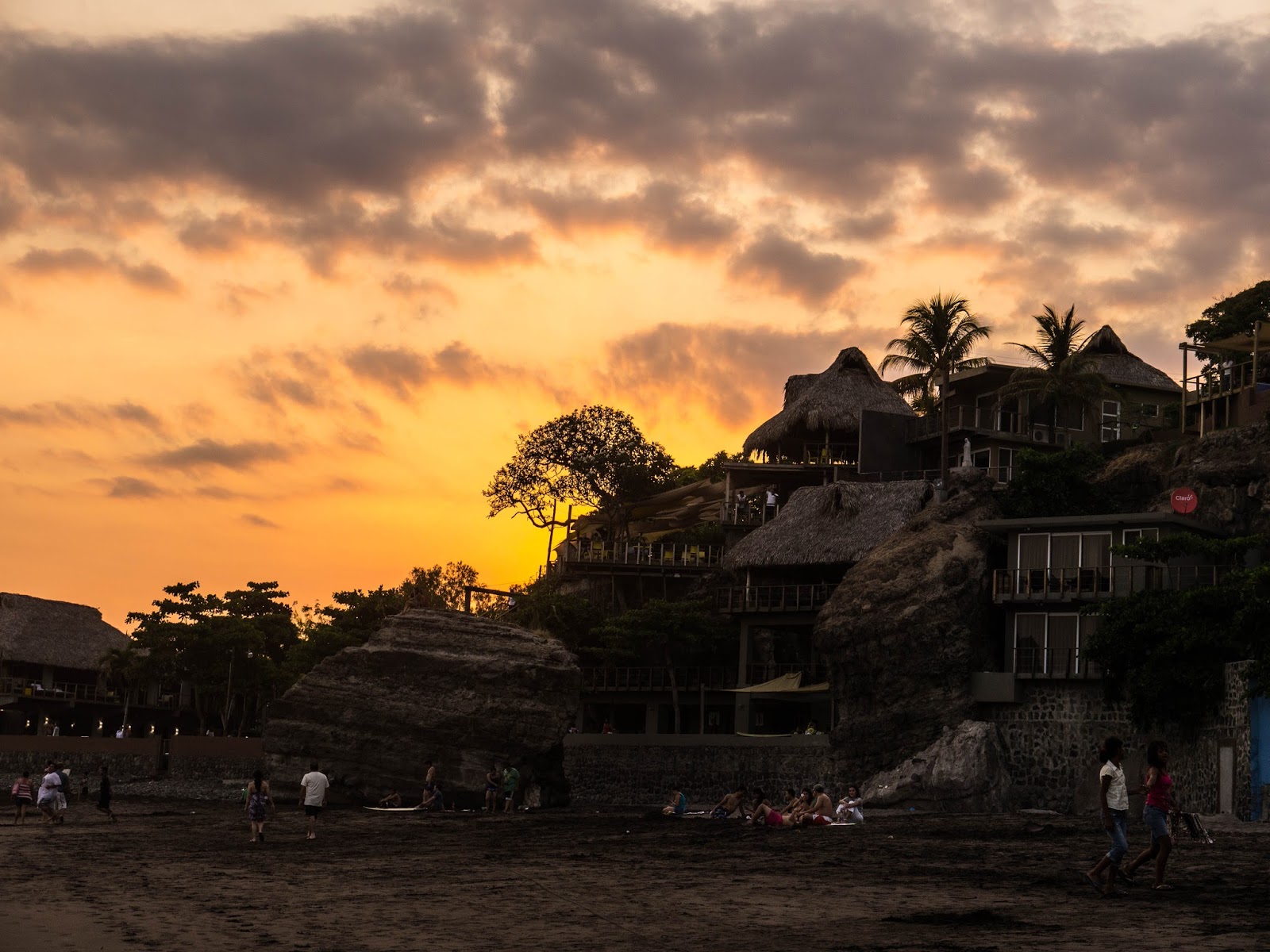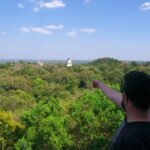Bordering Guatemala to the east and Honduras to the south is the splendid, but small country of El Salvador. The tiniest country in Central America with a modest cultural heritage and a history of civil unrest is not necessarily on many travelers’ radar. It doesn’t have the finest beaches (though famous among surfers), the most spectacular Mayan ruins, or the highest volcanoes, but exactly this fact attracts fewer tourists and makes the country an authentic experience.
No matter whether you are into surfing or not, here is some proof of why you should not overlook this teeny-tiny country.
Beautiful Murals in Concepción de Ataco
Ataco is a very charming and perhaps the most welcoming stop along the Ruta de las Flores. La Ruta de Las Flores, meaning route of the flowers, got its name for the seasonal burst of colorful flowers that line the expanse of a mountainous road stretching just over 36 km/ 20 miles. We were told that the “Ruta de Las Flores” project had only started back in 2006, as the government needed a way to make money when coffee prices went down. So, once-the-sleepy coffee plantation towns on the route had applied a new makeup to attract tourists, such as the mural paintings in the colonial town of Ataco.
Ataco’s cobblestone streets are lined with brightly painted houses, several with beautiful murals, handicraft shops, pupuserias, and more. Here is what I came across during an evening stroll through the town’s narrow streets.
Los Chorros de la Calera Waterfalls, Juayua
Juayua, another town on the Ruta de las Flores is not only famous for its weekly food fair, but also the starting point of the Seven Waterfalls (Los Chorros de la Calera) tour, a hike leading through a series of breathtaking waterfalls. You can get to the waterfalls from Juayua after a short tuk-tuk drive on a dirt bumpy road. From the entrance (no fee as of 2014), it is only a short hike down the lush green hill to reach the waterfalls.
Go as early as possible to avoid the crowds and don’t forget your bathing suit to swim in several of the pools at the falls. It is refreshing and so much fun, trust me! Accompanied by a local guide, you can even swim through a dark tunnel. Well, in fact, it is rather floating on your knees for about 20 meters, and it gets completely dark for only a few seconds. Be warned though, you need to turn right to get out of the tunnel at the right moment. So, even though it may not sound as thrilling, it may end deadly if not accompanied by a local guide.
Parque Nacional Montecristo
The park bordered by El Salvador, Guatemala, and Honduras comprises the El Trifinio Peak, the highest point (2418m) in El Salvador. It is said to be a pristine cloud forest with outstanding vegetation and wildlife, and here are some snapshots of this park being bordered by 3 countries with misty dense vegetation.
 |
| Dealing with formalities at the entrance |
 |
| Campsite |
 |
| Our cabaña for 35 USD/night |
Tasty Pupusas
Meet the pupusa: El Salvador’s national dish made from a corn flour tortilla. The thick corn flour tortilla can be filled with cheese, chicharrón (shredded seasoned pork), refried beans, or a combination of all three for pupusas revueltas. Curtido, a sauerkraut-like cabbage slaw, and salsa roja, a tomato sauce, work as flavor-boosting sidekicks when added on top. While you can taste the pupusas for example in Guatemala as well, the most delicious and authentic ones are without a doubt to be found in El Salvador.
El Tunco Town
Although the entire town consists of only a few square blocks, El Tunco is a lively place with nightly pool parties, live music, dancing, 1$ pupusas, 2$ beers per liter, world-class surfing, stunning sunsets, and more. Such a pity that we could only spend a night here. We would love to come back, how about you?
Check out this post for more photos of El Tunco Beach.
El Cipitio, A Salvadoran Legend
El Cipitío is a very well-known character in Salvadoran culture. Originally called “Cipit,” El Cipitio got his name from a Nahuatl word, “Cipote,” a word used for children in El Salvador. El Cipitio was the illegitimate son of Sihuet and her lover. As a punishment for her infidelity to the god Tlaloc, he cursed both mother and child.
The mother was condemned to wander the fields as “La Siguanaba” and the boy was sentenced to eternal youth; he is always depicted as a boy of ten or eleven years old with the dresses of an underprivileged child.
He wears a large straw hat and a white blanket over his shoulders. His feet are twisted backward so that if villagers try to follow his footprints, they will walk in the wrong direction. He is also said to have the power to teleport himself throughout the country with ease.
In general, his character is not offensive or dangerous in any way, but he enjoys playing tricks on people and laughing heartily at his victims. Many native authors are inspired by this legend and mention it in their poems, books, and writings.
Ask about Cipitio and many Salvadorans will be able to tell you their own personal version of the legend!



















































